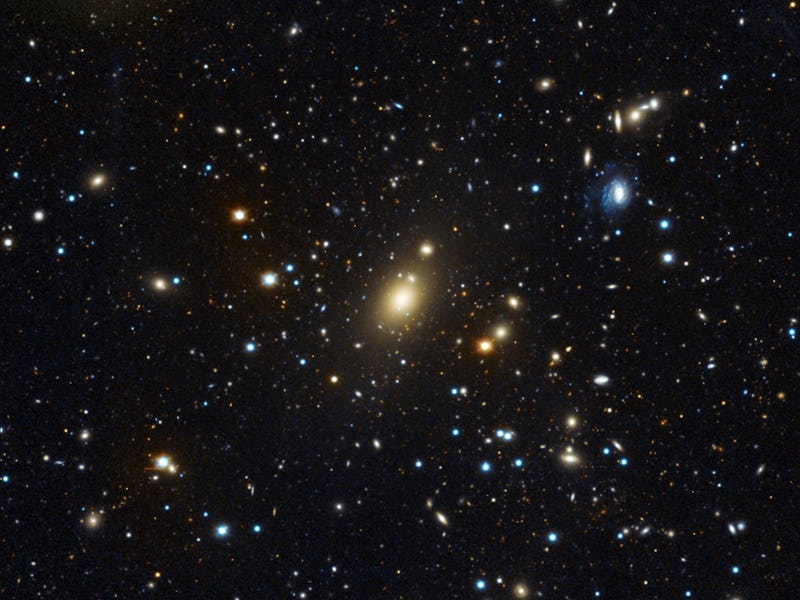Scientists discover most massive black hole in the local universe
At 40 billion solar masses, this black hole breaks records.

In a galaxy 740 million light-years away, there lies a monster. The galaxy, Holm 15A, is one of several that make up the Abell 85 galaxy cluster. It is the brightest galaxy in Abell 85, and one of the brightest in our corner of the universe. But in its center, there is a darkness: The region has very low surface brightness — a signature often left by the collision of two supermassive black holes.
That darkness is now coming into the light. The center of Holm 15A is home to an absolutely massive blackhole. At 40 billion solar masses (40 billion times the mass of the Sun), this behemoth dwarves the Milky Way’s central black hole, Sagittarius A* — a puny 4 million solar masses. In fact, it dwarves every other black hole in our galaxy’s vicinity.
“[The black hole] is the most massive with a direct and accurate dynamical detection in the local universe,” study author and Max Planck Institute researcher Roberto Saglia tells Inverse.
The monster supermassive black hole is described in a new study due to be published in The Astrophysical Journal and in a preprint on ArXiv.
Into the heart of darkness
The discovery came to light after astronomers observing Abell 85 noticed that the galaxy Holm 15A has a dark patch at its center. This was weird: Holm 15A has a mass of 2 trillion solar masses in stars. Basically, it is bright.
The Abell 85 galaxy cluster, as observed by NASA's Chandra.
“We knew from past studies that such low central surface brightnesses in big galaxies are a signature produced by the merging of two supermassive blackholes; so, when we saw that Holm 15A had such a surface brightness profile, we realized that only a huge central black hole could have produced it,” Saglia says.
Using photometric data from the Wendelstein Observatory and spectral measurements of the central region of the galaxy, the astronomers were able to see how quickly the stars around the black hole were moving. The stars’ speed is dictated by the black hole’s gravitational force, Saglia says. Those were the data they needed to calculate the black hole’s mass.
“From this, using Newton’s law, one can derive the mass of the black hole,” he says.
Overall, this giant black hole accounts for 2 percent of the total mass of the galaxy, “a rather extreme value,” Saglia says.
Galactic evolution
The dim center also betrays another feature of the galaxy: that it likely formed from a merger of two smaller galaxies, both of which had a supermassive black hole of their own at the center, Saglia says.
As galaxies merge, the supermassive black hole at the resulting galaxy’s center becomes more massive — and as it becomes more massive, the more stars it expels from the center. This is a process known as “core-scouring,” Saglia’s team says. Basically, stars are pinged away from the galaxy center by the gravity of the central black hole.
Holm 15A is the brightest and largest stellar mass galaxy for which scientists have been able to make these kinds of measurements, Saglia says. But the research team argues that looking at the relationship between black hole mass and surface brightness could help them weigh up black holes in galaxies even further afield in our universe. If that proves possible, perhaps Holm 15A’s mostrous black hole won’t seem so monstrous for long.